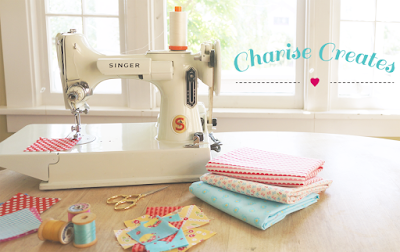Hello and Happy Monday.
Welcome to my stop on the Farmer's Wife 1930s Quilt Along hosted by Kerry at
Verykerryberry. Today I am sharing the block "Ann".
I picked this block to share because my mom's name is Ann and she was a farm girl.
She spent summers on her grandparent's farm when she was a girl in the late 40's/early 50's.
She often talks about how idyllic those summers were.
Her grandfather was a baker and her grandmother was a homemaker.
My mother fondly remembers spending time with them tending the animals and the garden.
I joined the First Farmer's Wife quilt along a few years back, and used templates for my blocks.
It was honestly difficult to get accurate blocks - the pieces are small and so are the blocks - just 6".
In the new book, the author, Laurie Aaron Hird has included paper piecing patterns!
I'm thrilled and will be paper piecing all of my blocks.
I find this the easiest method to get sharp and accurate seams.
My favorite supplies for paper piecing are:
*Translucent Vellum from Office Depot. It is slight see through so you can see the fabric through the paper which makes it perfect for fussy cutting. It is also OK to use with a dry iron and doesn't shrink or curl.
*Add a Quarter Ruler - the ruler has a 1/4" lip which makes adding a 1/4" seam allowance around your sections very easy.
*Fabric Glue Stick - I use it to attach the paper pattern to small pieces of fabric. It comes off easily and is water soluble. It is also helpful to position the pattern on fabric for perfect fussy cut motifs.
*Fine Pins - I like Clover Brand Flower Head Pins Fine - .45 mm
* * * * * * * * * * * * * * * * * * * * * * * * * * * * * * * * * * * * * * * *
If you are new to paper piecing, I have a tutorial and free pattern
[HERE]
I also have lots of tips for paper piecing
[HERE]
* * * * * * * * * * * * * * * * * * * * * * * * * * * * * * * * * * * * * * * *
HERE ARE A FEW TIPS FOR PUTTING THE BLOCK TOGETHER:
***I prefer to cut the seam allowances off the pattern sections. I find it is easier to sew the sections together without the added bulk of the pattern seam allowance.
***Be sure to change your stitch length to 16 - 18 stitches per inch when stitching the sections together.
1] I wanted all my points to be centered on the plaid, so I started by using a bit of fabric glue to position the D1 portion on the fabric.
The wrong side of the pattern will be facing the wrong side of the fabric.
2] Fold back on the stitching line between D1 and D2.
Use your ruler and rotary cutter to add a 1/4" seam allowance.
3] Cut Section D2 at least 1/2" larger that the section. Place section D1 to D2 the right sides together.
Stitch on the line between D1 and D2. Start stitching on the inside of the pattern, Back tack, and continue stitching to the end of the stitching line continuing beyond the pattern. Fold the fabric back and press with a dry iron.
Add section D3 as #3 above.
4] When adding section D4 I wanted to fussy cut the motifs.
I turned the pattern over so the right side of the fabric is facing me.
I then positioned the pattern where I wanted the motifs to be.
Trace around the pattern piece with a 1/4" seam allowance to get a perfectly
planned piece of fabric for D4.
Add D4 and D5.
5] When stitching sections L and E to D, I first pinned the corners using fine Clover pins.
Change you stitch length to 10 - 12 stitches per inch and stitch the seam back tacking at the ends.
Follow step #1 - 5 for the remaining three sections.
6] Putting the sections together - My method to match seams ***easy, peasy****
When I first started paper piecing, I swear I spent more time ripping out seams than I did sewing!
Here are my tips for getting your seams to match perfectly.
I find this works best if you cut off the seam allowances from your pattern.
Pin the seams that you want to match.
Baste stitch just where the seams meet, not the entire length of the seam.
Flip over, open the seam and double check that the seams match.
If they don't - no biggie! Just remove the basting stitches and re-sew!
Once you are happy with the seam matching, stitch the seam with a 10 - 12 stitch length making sure to back tack at each end. Press the seam open.
I hope these tips are helpful!
Please don't forget the use the has tag #fw1930sqal is you are sharing your blocks on Instagram and/or Twitter.
Happy Stitching!!!
xo
Charise























